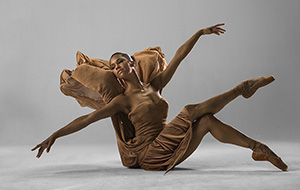 American Ballet Theatre principal Misty Copeland is set to star as the lead ballerina in the live-action version of The Nutcracker created by Disney. She is well on her way to becoming a household name with what might be her biggest job yet. Having already identified herself as accomplished in a number of balletic roles, this Nutcracker gig is not the first time Copeland has been on screen but is one of a kind for the ballerina.
American Ballet Theatre principal Misty Copeland is set to star as the lead ballerina in the live-action version of The Nutcracker created by Disney. She is well on her way to becoming a household name with what might be her biggest job yet. Having already identified herself as accomplished in a number of balletic roles, this Nutcracker gig is not the first time Copeland has been on screen but is one of a kind for the ballerina.
The film is entitled The Nutcracker and The Four Realms, directed by Lasse Hallström. Hallström’s filmography also includes titles such as The Cider House Rules, Chocolat, Hachi: A Dog’s Tale, and Salmon Fishing in the Yemen. Copeland is familiar with the role of Clara, dancing the part in Alexei Ratmansky’s production of The Nutcracker. She will be appearing in the film’s dance sequence however there is no word on who the choreographer may be just yet. Also unconfirmed is the release date for the film.
The Nutcracker and The Four Realms will be based on E.T.A. Hoffmann’s story “The Nutcracker and the Mouse King,” in which a young girl named Marie watches her toy nutcracker comes to life, fights the evil Mouse King, and is whisked off to a magical land filled with living dolls. The classic ballet, with its iconic score from Tchaikovsky, is based on that tale. It has been adapted for the big screen many times over the past few decades, most recently in 2009, with The Nutcracker in 3D.
Ahead of any filming or choreography schedules, Copeland is keeping herself very busy. Alongside dancing as a principal with American Ballet Theatre, this summer alone she is launching her own dancewear line, named Egal. She is also appearing in a Cosmopolitan magazine feature and even getting married.

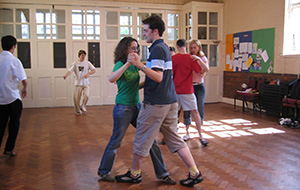 Dance is a universal concept, not limited to any one culture or age group. It can give so much to so many people, whether that is by partaking in the art form or by watching and enjoying from the sidelines.
Dance is a universal concept, not limited to any one culture or age group. It can give so much to so many people, whether that is by partaking in the art form or by watching and enjoying from the sidelines.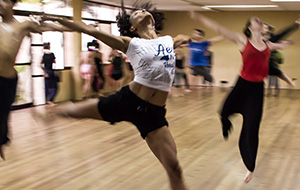 The School of Sport, Health and Applied Science at St Mary’s University, Twickenham and the Royal Opera House have recently announced a new partnership in order to deliver sports science support services to the Royal Ballet. Working closely with the dancers, the St Mary’s academics will be providing strength, conditioning and sports science support, alongside the Royal Ballet’s Clinical Director. The academics’ expertise will provide much needed insight for the dancers in helping them to work smartly.
The School of Sport, Health and Applied Science at St Mary’s University, Twickenham and the Royal Opera House have recently announced a new partnership in order to deliver sports science support services to the Royal Ballet. Working closely with the dancers, the St Mary’s academics will be providing strength, conditioning and sports science support, alongside the Royal Ballet’s Clinical Director. The academics’ expertise will provide much needed insight for the dancers in helping them to work smartly.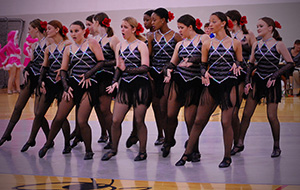 Many dancers take part in competitions throughout the year, and are often keen to learn new dances to present against their peers. Music can be a large part of a routine to impress a judge, but can make or break the dance regardless of how talented the dancer is.
Many dancers take part in competitions throughout the year, and are often keen to learn new dances to present against their peers. Music can be a large part of a routine to impress a judge, but can make or break the dance regardless of how talented the dancer is.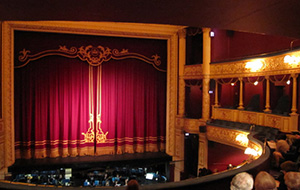 Theatre etiquette is a topic that springs up time and time again, albeit faster than the time it takes for your neighbour along the row to move from their seats to let you past to yours. This is just one instance in the theatre of behaviour that detracts from the theatrical experience for many audience members, where their enjoyment is tainted by the fact others cannot and will not behave accordingly.
Theatre etiquette is a topic that springs up time and time again, albeit faster than the time it takes for your neighbour along the row to move from their seats to let you past to yours. This is just one instance in the theatre of behaviour that detracts from the theatrical experience for many audience members, where their enjoyment is tainted by the fact others cannot and will not behave accordingly.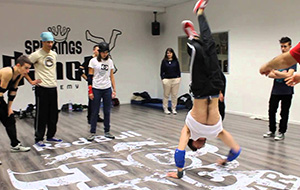 With the summer months well underway, many dance students are preparing to begin vocational or further dance training in September on a college or university programme. The years of study will pass by in a flash so it is essential to be ready to hit the ground running when beginning your studies, ready to get underway straight away.
With the summer months well underway, many dance students are preparing to begin vocational or further dance training in September on a college or university programme. The years of study will pass by in a flash so it is essential to be ready to hit the ground running when beginning your studies, ready to get underway straight away.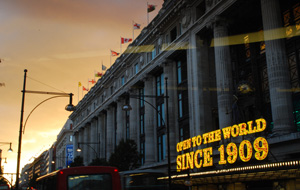 The London department store Selfridges – identifiable by its prominent yellow branding – is set to launch an 100-seat theatre this summer, that will allow customers to watch a Shakespeare production being rehearsed and performed within the store. In what appears to be a first for the performing arts, the department store will dip into its artistic side in order to provide its shoppers and other theatrical audiences with some theatre in its Oxford Street store in London.
The London department store Selfridges – identifiable by its prominent yellow branding – is set to launch an 100-seat theatre this summer, that will allow customers to watch a Shakespeare production being rehearsed and performed within the store. In what appears to be a first for the performing arts, the department store will dip into its artistic side in order to provide its shoppers and other theatrical audiences with some theatre in its Oxford Street store in London.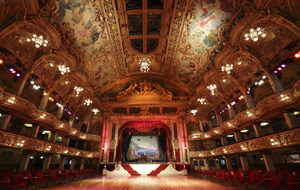 The BBC recently announced its professional dancer line up for the hit television show series Strictly Come Dancing 2016. A highlight of the dancing year for many, the series is always highly anticipated and has gone from strength to strength year on year. With other celebrity talent competition, such as Dancing on Ice, falling by the wayside, Strictly has continued to be popular.
The BBC recently announced its professional dancer line up for the hit television show series Strictly Come Dancing 2016. A highlight of the dancing year for many, the series is always highly anticipated and has gone from strength to strength year on year. With other celebrity talent competition, such as Dancing on Ice, falling by the wayside, Strictly has continued to be popular. Director-choreographer Will Tuckett is on track to stage the world’s first immersive ballet through the classic The Nutcracker. Named solely Nutcracker, the production will enable audiences to explore the world of Tchaikovsky’s Christmas ballet first hand. Last year Alice’s Adventures Underground took place in the Waterloo Vaults in London, and this year an immersive dining experience surrounding Roald Dahl’s The Twits will disgust and delight, demonstrating the aptitude for this type of performance. Audiences – as well as artists – constantly strive for new experiences.
Director-choreographer Will Tuckett is on track to stage the world’s first immersive ballet through the classic The Nutcracker. Named solely Nutcracker, the production will enable audiences to explore the world of Tchaikovsky’s Christmas ballet first hand. Last year Alice’s Adventures Underground took place in the Waterloo Vaults in London, and this year an immersive dining experience surrounding Roald Dahl’s The Twits will disgust and delight, demonstrating the aptitude for this type of performance. Audiences – as well as artists – constantly strive for new experiences. Under the artistic helm of David McAllister, The Australian Ballet was last seen in the UK in 2008; 2016 has seen a two-week season of ballet for the company, with Graeme Murphy’s Swan Lake from 13–16 July and Alexei Ratmansky’s Cinderella from 20–23 July at the London Coliseum.
Under the artistic helm of David McAllister, The Australian Ballet was last seen in the UK in 2008; 2016 has seen a two-week season of ballet for the company, with Graeme Murphy’s Swan Lake from 13–16 July and Alexei Ratmansky’s Cinderella from 20–23 July at the London Coliseum.